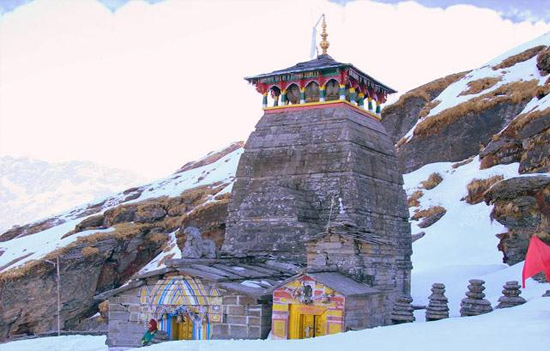- All
you wanted to know about Tungnath Temple.
Many ancient temples of Shiv ji are built in India and many
other countries around the globe for
e.g. Indonesia.
All ancient temples of Shiv ji located in India or any corner of
the world have different religious significance. Today, the ancient temple of
Shiv ji , which I am going to tell you about, is Tungnath Mahadev. This ancient
Shiva temple is the highest Shiva temple in
the world.
The ancient temples of Shiv ji located in Uttarakhand are
Kedarnath, Tungnath, Rudranath, Madhyamaheshwar, and Kalpeshwar. Together, they
are called Panch Kedar.
Among the Panch Kedar temples, the Tungnath Mahadev Temple is
placed at number three. According to Indic tradition, all these Shiv temples
were built by the Pandavas after the war of Mahabharata.
Before I talk about the Mahabharata, let me tell you that that Tungnath Temple's history is related to the Mahabharata period and is also directly related to Sri Ram and Ravana.
It is said that Sri Ram meditated at a place called
Chandrashila, located a short distance from Tungnath. When the Lord resided at
this place, Ravana also did penance at the same place to please Shiv ji. Now we
come back to the time of Mahabharata.
After the end of the war of Mahabharata, sage Vyas told the Pandavas that - "During the battle of Kurukshetra, you five brothers killed your cousins and relatives; therefore you are all guilty of fratricide, and you have committed this sin only. And only Shiv ji can forgive. "
Thus, the five Pandavas went in search of Shiv ji. But Bhagwan Shiva was very angry because of
the crimes committed. Due to this, Shiv ji took the form of an ox to avoid
seeing the Pandavas and hid at a secret place in Kashi.
But the Pandavas reached
Kashi looking for Shiv ji. After that, Bhagwan Shiv appeared in the form of a
bull, and later five different parts appear.
According to tradition, the upper part of Lord Shiva appeared in Kathmandu (Nepal) where his temple is known as Pashupatinath. Shiv ji’s back appeared in Kedarnath, Arms in Tungnath, Mouth in Rudranath, Navel in Madhyamaheshwar, and Jata in Kalpeshwar.
For this reason, all these temples located in Uttarakhand are
called Panchkedar.
The Pandavas built temples of Shiv ji in all these places where He
appears in different forms. So that they could apologize to Lord Shiva in all
these places and please him. After that Bhagwan Shiv was satisfied with the
penance carried out by the Pandavas He blessed them and freed them from the
crime of brotherly murder.
 Tungnath
during winters.
Tungnath
during winters.
The Architecture of Tungnath
Temple
The
Tungnath temple is believed to be more than 1000 years old. The architecture of
the main temple is similar to the architecture of the Kedarnath temple. Several
small temples are also built around the Tungnath temple in North Indian style.
The Shiva lingam is located in the temple's sanctum. It is made of black stone. Apart from this, a pratima of Ganesha is engraved on the right side of the entrance of the temple. Pratimas of Vyas Rishi, Kaal Bhairava, and Ashta Metal are also installed in the temple premises.
Apart
from this, a silver replica of the four Kedar temples and pictures of Pandavas
are also engraved. The shikhara of the temple is decorated with giant stone
slabs.
Worship at Tungnath Temple
Whereas
the priests of other Kedar temples come from South India, the priests of the
Tungnath temple come from a local Brahmin family.
The
priest of the temple is a resident of Makku village located nearby. Due to
excessive snowfall during the winter season, the shrine of the Tungnath temple is
closed for six months. And the symbolic image of Lord Shiva is taken to
Makumath, 29 km from Tungnath, where Shiv ji is worshiped for the next six
months.
Geography of Tungnath
Temple
is at a height of 3680 meters (12070 feet) above sea level. It is located in
the Rudraprayag district of Uttarakhand.
Holy
rivers like Mandakini and Alaknanda form the Tungnath mountain range. Apart
from these two rivers, the Peak of Tungnath Mountain is also considered the
source of the three waterfalls flowing here, from which the Akashmani river is
formed. Chandrashila is about a 1.5 km walk from Tungnath. Tungnath is a 4 kms
trek from Chopta.
Author Bio - Trend Around Us is a team of travel enthusiasts
working nonstop to bring you quality content and exciting travel stories.
Also read
1.
About
Panchkedar in Hindi
2.
About Char Dham Yatra
3.
Albums
Badrinath and Kedarnath
4.
About Chopta